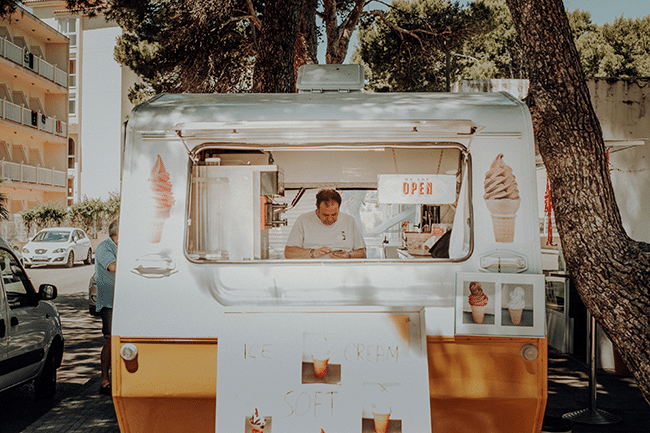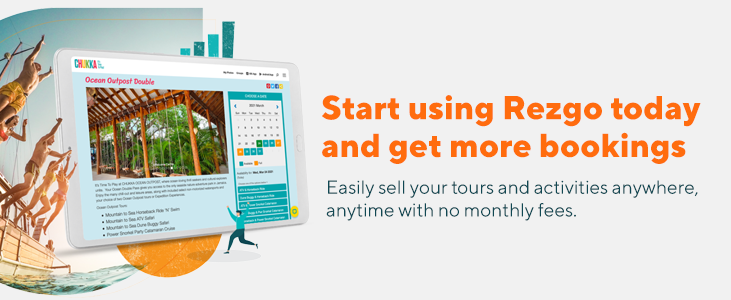Table of Contents
What Is A Food Tour?
Culinary tourism is becoming an increasingly popular trend among travelers since the foodie movement.
A foodie is someone who enjoys indulging in and experiencing food and drink in all different forms.
A food tour involves guiding travelers through a tour of food from the best restaurants around your city or neighbourhood.
Why Start a Food Tour?
So, why should your tour or activity business start a food tour?
Food tours are easily differentiated: There are so many different food tour niches to choose from that it’s easy to stand out and satisfy a unique type of customer.
Food tours are unique: Food tours provide a unique avenue for foodie travelers to explore the city they are visiting.
Food tours have low barriers of entry: Food tours require little initial investment. The minimum equipment and staff required includes a computer and one food tour guide.
Food tours are flexible: A typical food tour lasts between 2-4 hours, so you can conduct the tour around the hours of your tour or activity business.
Food tours are great for the community: Starting a food tour business helps support the local community by bringing business to the restaurants in your area.
Food tours are becoming popular among travelers: According to the United Nations World Traveler Organization’s report on food tourism, over one third of a travelers income is spent on food.
How Can Running a Food Tour Generate Extra Profit For My Tour or Activity Business?
One of the main incentives of starting a food tour is that it can help generate extra profit for your tour or activity business.
Food tours typically cost between $30-$100 depending on the cost of the food, length of the tour, and additional amenities.
Kristen Seymour and her husband, Ryan, have a side-gig conducting a 3 hour food tour in Northern Florida.
They keep the number of people on their tours between 14-15 and charge about $50 per person.
“We try to keep costs around 50% of the total ticket price, so that means we typically take home a little over $300 per fully-booked tour” says Kristen.
With very few resources required to run a food tour and the 50% revenue potential, it’s a great way to generate extra profit for your tour or activity business.
Now that you know why you should start a food tour, how do you get started?
How to Start a Food Tour Business
1.Find Your Niche
Like the start of any business venture, the first step requires you to find your niche.
Understand your audience, what they want, and why they want it so that you can choose a niche that satisfies their needs.
Also understand your business’ needs. Analyze the food tour industry to see which markets are oversaturated and which have room for growth.
This way, you can choose a niche that best fits with your audience’s needs and your business’ needs.
Examples of food tour niches:
- Gourmet Food
- Farmer’s Market
- Vegetarian/vegan Food
- Food from a certain country (i.e. french, thai, etc).
- Food trucks
- Pastry shops
- Desserts
2. Find Your Neighbourhood
The neighbourhood that you choose to operate your food tour business must be selected carefully.
It is important to choose a neighbourhood:
That is beautiful to walk around: Try choosing a neighbourhood that is pleasant to walk around in and one that contains other tourist attractions. This will keep your food tours diverse and the customers engaged.
Where the restaurants and cafes are at a walkable distance: Strategically choose the location of the restaurants on your food tour. You ideally want resturants close enough together so that customers don’t have to do too much walking, but also far enough a part so that they have time to digest their food between places.
Where the food is excellent: Last but most certainly not least, it’s very important that the neighbourhood you choose contains lots of delicious food!
3. Make A Food Tour Business Plan
A business plan helps to give your food tour business direction and guidance.
Your food tour business plan should answer the following questions:
- What need does my business satisfy?
- How does my food tour business differ from others?
- Who are the key people that need to be involved with my food tour business?
- What is the market size of the food tourism industry?
- What audience am I targeting?
- What is my marketing strategy?
- How much money do I need to get started?
- How much money do I need to make to break-even?
Click here for free samples of travel and tourism business plans.
4.Reach Out To Local Restaurants
Now for the most delicious part of planning a food tour- reaching out to local restaurants and tasting the food!
Choose restaurants based on:
- Quality of food
- Ambience
- Prices
- Service
- Location
- Your niche
Once you’ve decided which restaurant you would like featured on your food tour, speak with the owner to see if it’s possible.
Explain to him or her why having the restaurant featured on the food tour would be beneficial for business.
For example, explain that the food tour will give their business exposure to new clients, free marketing, and new avenues to generate profit.
5. Set Up Equipment And Staff
Running a food tour business involves very few start up costs – your main tools include a computer, a website and a tour guide.
Eventually you may need to hire staff to assist with the tours, but if the business is small one person can give the tours.
If you do hire staff, make sure that they have high energy, make the customers feel comfortable, and are well organized and responsible.
6.Market Your Business
Starting a food tour business is one thing, getting it to grow into a successful business is another.
It’s important to spend a lot of time marketing your food tour business because travelers will mainly hear about it through word of mouth and internet reviews.
Try:
- Inviting local foodies for free tours: Ask them to post some pictures or write testimonials.
- Contacting influencers and bloggers: Ask them to write an article or record a video about the tour.
- Listing your food tours: List your food tour on websites including your Google Business Profile.
Use social media platforms like:
- Facebook: Create food tour events and share them on Facebook.
- Instagram: Share pictures from restaurants featured on your food tours.
7.Launch Your Business
Now that you have everything you need to successfully operate a food tour business, it’s time to launch!
Make sure that you start your food tour business off strong by having everything organized and ready to go.
Make sure:
- The food tour is easy to book: Sometimes it can take up to 10 back-and-forth emails to book a tour. Make the experience seamless and simple for your customers by installing the best booking software for food tours: Rezgo.
- Influencers are talking about your food tour: Remember, the best way to market your food tour is through word-of-mouth marketing.
- To send a pre-tour email to your customers: Send an email explaining what customers should bring on the tour. For example, comfortable shoes, a bottle of water, and some cash.
Now that the food tour has launched, here are a few post-launching steps to remember:
8.Maintain Your Business to Business Relationships
The core workings of a food tour business are the relationships with local restaurant owners and staff members. It’s important to maintain these relationships to continuously improve the food tour experience.
Once a few tours have been conducted, ask the restaurant owner and staff for their feedback.
Ask questions like:
- How can the food tour be improved?
- What can our food tour business do differently?
- What is our food tour business good at?
- How did your staff enjoy participating in the food tour?
9.Be Innovative
With low barriers of entry, the food tour industry can easily become over-saturated with competition.
Therefore, it’s important to stay on top of things and to continuously be innovative with your business.
Try:
- Visiting new restaurants and cafes in your neighbourhood
- Finding new avenues for advertisement.
- Asking new influencers to promote your business.
- Updating your website with new information.
- Checking for local and national foodie and food tour trends.
10. Bonus
Take your food tour to the next level by trying out these extra tips and tricks!
Try:
- Including workshops: Workshops include learning how to properly mix a cocktail or properly stuff a cannoli, but overall they are a great way to keep the food tour interesting and diverse.
- Snacks, not meals: Don’t overdo it with the food! You want your customers to enjoy a little nibble of food on each stop of the tour.
- Going into the history of food: Make it a learning experience for your customers by diving into the cultural history of the food they are enjoying.
- New methods of transportation: Offer bicycle tours, double decker bus tours, or even horseback tours.
Conclusion
So why should your tour or activity company start a food tour business?
Food tour businesses have low start up costs, are becoming an increasingly popular trend among travelers, and are great for the community.
Also remember that food tour businesses have high competition, require innovation and require lots of marketing efforts.
But overall, starting a food tour business is a great way to generate extra profit for your tour or activity business.
The 10 steps to starting a food tour business summarized:
- Find Your Niche
- Find Your Neighbourhood
- Make A Food Tour Business Plan
- Reach Out To Local Restaurants
- Set Up Equipment And Staff
- Market Your Business
- Launch Your Business
- Maintain Your B2B Relationships
- Be Innovative
- Bonus
Are you a food tour operator or have you included a food tour into your tour offerings? Let us know if you have any tips or advice for operators that are thinking about getting into food tourism. Add your comments or advice in the comments section. Bon Appetit!








